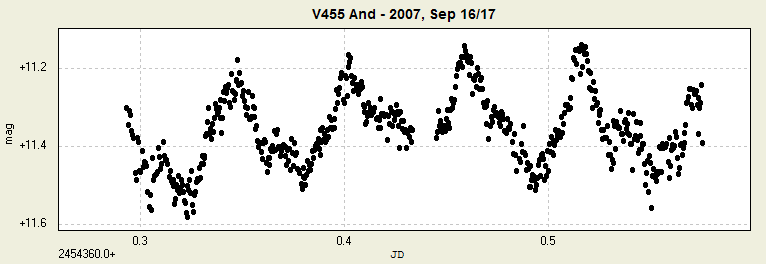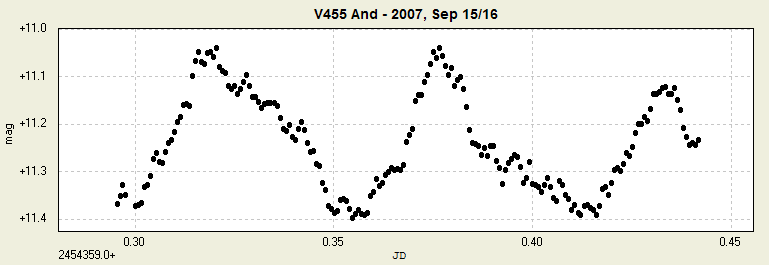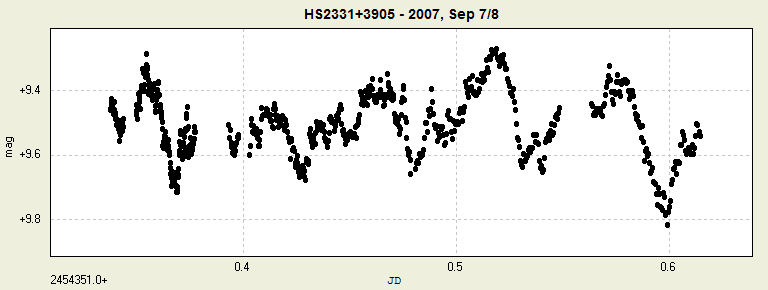 |
 |
 |
|
 |
| |
CCD
Observations of the UGWZ-type dwarf nova V455 And = HS2331+3905
Below are my CCD observations of the dwarf nova V455
And, obtained during its famous
superoutburst of September 2007.
2007, Sep 21/22

Superhumps becoming less
prominent, and more low-amplitude oscillations.
2007, Sep 19/20

Short run again due to
clouds.
2007, Sep 18/19

Short observation session
(clouds), but superhump(s) still very prominent.
2007, Sep 16/17

Light curve of Sep 1
6/17,
2007 in unfiltered light. Clear skies, though not
photometrically good. Superhumps still
strongly present and eclipse observed in final part
of LC.
2007, Sep 15/16

Light curve of Sep 1
5/16,
2007 in V-filtered light. Clear skies initially,
then clouds. Superhumps strongly present.
2007, Sep 13/14

Light curve of Sep 13/14,
2007 in unfiltered light. Sky conditions initially
were good, then it became hazy and finally
low clouds stopped the run. Period analysis
on the Sep 13/14 data, using the ANOVA method, reveals
a
superhump
period of 0.057 +/- 0.002 d.
2007, Sep 12/13

Light curve of Sep 12/13,
2007 in unfiltered light. Sky conditions were
moderate, with low clouds near the end of the
session.
Lots of small-scale modulations, and no evident
signature of common superhumps (yet).
2007, Sep 11/12

Light curve of Sep 11/12,
2007 in V light. Sky conditions were not good :
broken clouds and finally overcast.
2007, Sep 07/08

Light curve of Sep 07/08, 2007, obtained under
good seeing (but with broken clouds at some
occasions). The first part of the light curve -till
JD 2454351.38- is unfiltered. All other observations
are V filtered. Early superhumps are
"clearly" present.
Period analysis
on the Sep 07/08 data, using the ANOVA method, reveals
an (early) superhump
period of 0.0561 +/- 0.0011 d, which is well in line
with other values published a/o on CVNET. Note also
the intensive short-period oscillations,
superimposed on the superoutburst profile.
|
|
|
 |
|
 |
|
|
 |
Copyright © 2007 - Tonny Vanmunster.
|
 |
|
 |